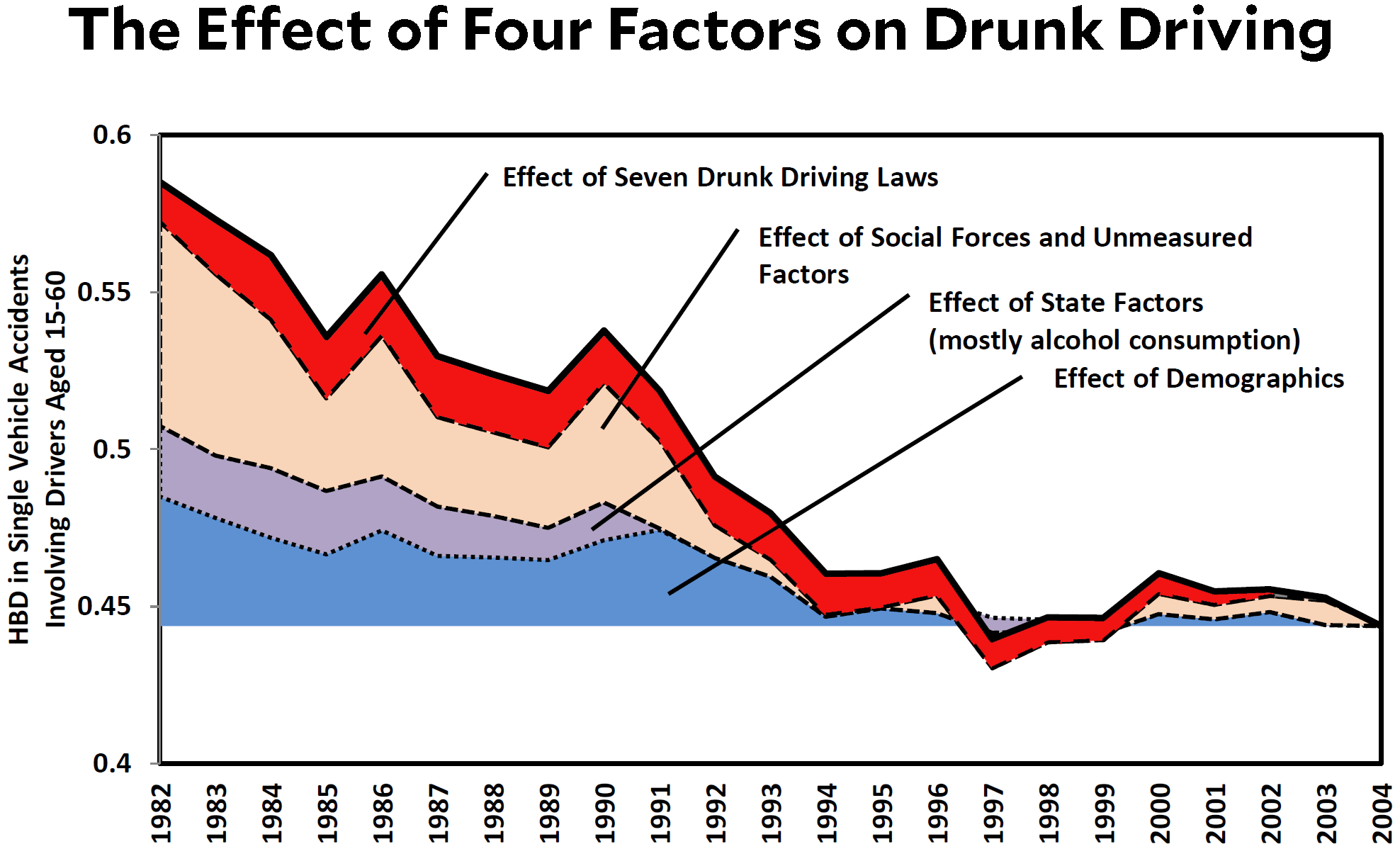Yesterday I wrote about the mystery of drunk driving: if stricter laws and harsher punishments really are responsible for a decline in drunk driving, why is it that alcohol-related fatalities have only declined at the same rate as every other kind of road fatality? Is it possible that all those laws have been useless?
I got several good responses, which confirmed that there’s a bit of a mystery here but pointed out that my data only went back to 1994. This misses the significant drop in drunk driving during the 80s and early 90s. Then I got an email from Darren Grant, an economics professor at Sam Houston State University, pointing me to a paper that decomposes exactly what happened and when. Grant’s paper, which relies on a microdata-based model of traffic fatalities, concludes that it’s legitimate to use the percentage of all road fatalities that involve alcohol—which has been flat for many years—as a proxy for the amount of drunk driving. It also breaks down the reason for the decline in drunk driving during the 80s and 90s. Without further ado, here is his chart:

There are several takeaways from this:
- During the 80s and early 90s, drunk driving decreased significantly.
- By the mid-90s, the level of drunk driving flattened out and has been flat ever since.
- The effect of laws on drunk driving has been pretty modest. That’s the red band in the chart. Stricter laws are responsible for only a small fraction of the total decline.
There’s potentially some good news here. Grant concludes that the biggest effect by far has been from social forces, namely the increased stigma associated with drunk driving. If you discount demographics, which we have no control over, social stigma accounts for about half the drop in drunk driving. This suggests that what we need isn’t so much stricter laws, but a revitalized campaign to even further stigmatize drunk driving. I’m on board with that.


















